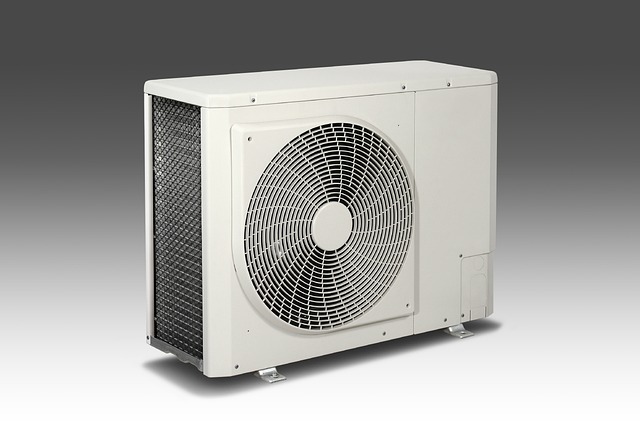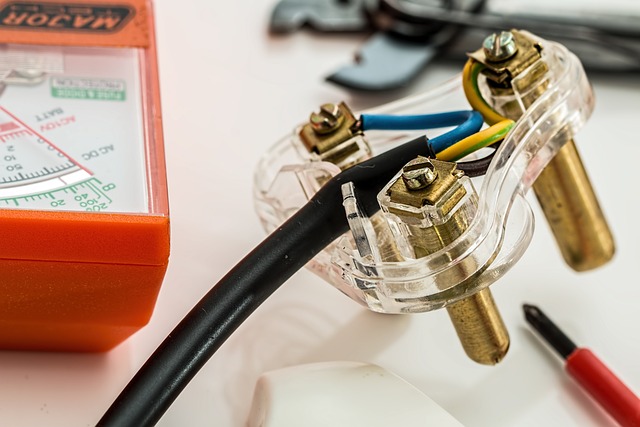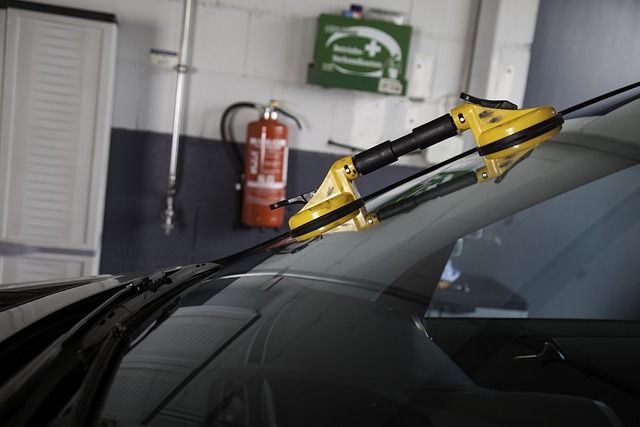TL;DR: HVAC system malfunctions often stem from refrigerant leaks, which reduce efficiency and performance. Prompt detection and repair are crucial for maintaining optimal HVAC operation. Technicians use UV or electronic leak detectors, visual inspections, and sometimes UV dyes to find leaks, even tiny ones. Homeowners should watch for signs like reduced cooling, unexpectedly high energy bills, or ice on refrigerant lines. Regular maintenance by skilled technicians can prevent damage and costly repairs, ensuring the system runs efficiently.
Professional HVAC repair requires a full set of tools, including leak detectors, manifold gauge sets, and PPE like gloves and goggles. Technicians must handle various refrigerants, like R-22 and R-410A, correctly, adhering to EPA regulations to protect the environment and public health. They use refractometers to confirm proper refrigerant levels and comply with service manuals for specific system details.
Common causes of leaks include corrosion, mechanical damage, and aging equipment with degraded seals. Regular maintenance helps catch these issues early. Leak detection involves ultraviolet dyes and leak detectors to pinpoint leaks in components like evaporator coils or copper lines. Once found, leaks are repaired or sealed, the system is recharged with the right amount of refrigerant, and performance is tested for cooling efficiency.
Safety is paramount during HVAC repairs, with technicians following safety protocols, using PPE, and consulting SDS for refrigerant handling. Certification under EPA's Section 608 ensures adherence to proper practices for leak detection and refrigerant recharging. Compliance with manufacturer guidelines and local regulations is essential, emphasizing environmental protection and responsible disposal of recovered refrigerants. Regular upkeep and early leak detection are key to preventing costly damage and ensuring the HVAC system functions at its best, conserving energy, and maintaining long-term reliability.
When it comes to maintaining optimal performance of your HVAC system, refrigerant leaks pose a significant challenge. This article delves into effective troubleshooting and recharging strategies for HVAC systems, ensuring both functionality and compliance with environmental regulations. We’ll explore the critical steps in identifying leaks, the necessary tools and materials, common leak causes, repair methods, EPA guidelines on refrigerant handling, and the proper procedure for recharging your system with the correct refrigerant levels. Additionally, we’ll provide valuable tips to prevent future leaks and highlight the expertise required for professional HVAC repairs, ensuring your system runs efficiently and safely.
- Identifying Refrigerant Leaks in HVAC Systems
- Tools and Materials Required for HVAC Refrigerant Troubleshooting
- Common Causes of Refrigerant Leaks in HVAC Units
- Step-by-Step Guide to Detecting Refrigerant Leaks in HVAC Systems
- Safety Precautions When Working with HVAC Refrigerants
Identifying Refrigerant Leaks in HVAC Systems

When HVAC systems malfunction, refrigerant leaks are often at the heart of the issue. Identifying these leaks promptly is crucial for maintaining the efficiency and functionality of your heating and cooling system. A trained professional should perform initial inspections to locate leaks using specialized equipment like ultraviolet (UV) leak detectors or electronic leak detectors, which can detect even trace amounts of refrigerant gas escaping from the system. Visual inspections can also assist in identifying common leak points such as joints, connections, and worn components. It’s important to monitor for signs of leakage, including a decrease in cooling performance, higher-than-normal energy bills, or the presence of ice on refrigerant lines—all indicators that HVAC repair is necessary. Regular maintenance and timely leak detection can prevent more extensive damage and costly repairs, ensuring your system operates at peak performance and extends its lifespan. If a leak is confirmed, a qualified technician will proceed with the appropriate HVAC repair protocol to seal the leak and recharge the system with the correct type and amount of refrigerant, restoring its optimal functioning.
Tools and Materials Required for HVAC Refrigerant Troubleshooting

When addressing refrigerant leaks within HVAC systems, possessing a comprehensive set of tools and materials is paramount for efficient and effective troubleshooting and repair. A certified HVAC technician typically requires several key items to perform this task safely and competently. To begin with, a good quality leak detector is essential for accurately identifying the source of the refrigerant escape. This device can detect even trace amounts of leaking refrigerant, ensuring that the issue is addressed before it becomes more significant. In addition to the leak detector, a full set of HVAC service tools is necessary, including a manifold gauge set, which allows for the safe recovery and recharging of refrigerant as per manufacturer specifications. The use of protective gear such as gloves, safety glasses, and possibly a respirator or mask is crucial when handling refrigerants to protect against exposure to hazardous substances.
Moreover, an HVAC technician will need access to a variety of refrigerant types, given that different systems may require distinct kinds of refrigerant, like R-22 or the more common R-410A. A refractometer is another important tool for verifying the correct charge level and measuring the concentration of the liquid refrigerant in the system. It’s also important to have the appropriate EPA certifications and follow all regulations regarding the handling and disposal of refrigerants, as these are potent greenhouse gases and their release into the atmosphere is strictly controlled. Additionally, service manuals for the specific HVAC equipment being serviced are invaluable for understanding the system’s design and operation, ensuring that repairs are carried out correctly and efficiently.
Common Causes of Refrigerant Leaks in HVAC Units

When it comes to refrigerant leaks in HVAC systems, understanding the common causes is crucial for effective HVAC repair. One prevalent issue is corrosion, often due to the chemical reactions between the refrigerant and system components, particularly in coastal areas where salt air can accelerate this process. This corrosion weakens connections and joints, leading to leaks. Another frequent cause is mechanical damage, which can occur during installation or due to external forces like falling debris or vehicle impact. Such damage compromises the integrity of the system’s components, resulting in refrigerant loss. Additionally, aging equipment with worn-out seals and gaskets can also be a source of leaks. Over time, these seals can dry out and fail, allowing refrigerant to escape. Regular maintenance by HVAC professionals is essential to detect and address these issues promptly before they escalate into more significant problems or inefficiencies within the system.
Identifying the type and location of a leak is a key part of the HVAC repair process. Leaks can stem from various components such as the evaporator coil, condenser, copper lines, or fittings. Inspecting these parts requires skilled technicians who can employ specialized tools like ultraviolet dyes and leak detectors to trace the source of the leak. Once located, the damaged area must be repaired or replaced, and the system must be recharged with the correct amount of refrigerant, following manufacturer specifications for optimal performance. This process ensures that the HVAC unit operates efficiently and maintains the proper cooling capacity, thereby extending its lifespan and providing reliable climate control for the home or business.
Step-by-Step Guide to Detecting Refrigerant Leaks in HVAC Systems

When it comes to maintaining the efficiency and performance of an HVAC system, detecting refrigerant leaks is paramount. A significant drop in refrigerant levels can lead to system underperformance, causing your home or business to lose cooling capacity and potentially driving energy costs up. To accurately identify refrigerant leaks in HVAC systems, a step-by-step approach is essential. Begin by visually inspecting the system for any obvious signs of leakage, such as moisture or ice buildup around connections, joints, and components. Pay close attention to areas where piping is most vulnerable to wear and tear.
For a more precise detection, employ ultraviolet (UV) dye and a specialized UV light during the HVAC repair process. By adding UV dye to the system, any refrigerant leaks will be visible under a UV light, as they will glow. This method is highly effective for locating leaks in hidden or difficult-to-reach areas. Once a leak is detected, it’s crucial to address it promptly. The repair may involve tightening connections, replacing faulty components, or applying a sealant to the leak. After repairs are completed and the system is recharged with the correct amount of refrigerant, the HVAC system should be tested to ensure proper operation and efficient cooling. Regular maintenance and timely detection of leaks can prevent extensive damage and costly repairs, ensuring your HVAC system operates at peak performance.
Safety Precautions When Working with HVAC Refrigerants

When repairing or servicing HVAC systems, safety is paramount due to the presence of refrigerants within the units. Refrigerants like R-22 and R-410A are potent and can pose health risks if mishandled. Technicians must adhere strictly to safety protocols during HVAC repair operations. It’s imperative to use appropriate personal protective equipment (PPE), including gloves, goggles, and protective suits, to shield against potential chemical exposure. Safety data sheets (SDS) for the specific refrigerant in use should be consulted to understand its properties and hazards.
Moreover, technicians must be certified under applicable regulations, such as the Environmental Protection Agency’s (EPA) Section 608, which governs the handling of refrigerants. This certification ensures that professionals are aware of the correct methods for detecting leaks with leak detectors and recharging systems with the precise amount of refrigerant required. Leak detection is crucial because refrigerants can escape into the atmosphere, causing environmental harm and system inefficiency. When undertaking HVAC repair that involves refrigerant handling, it’s also essential to follow the manufacturer’s guidelines and local regulations for ventilation and disposal procedures. Proper ventilation is necessary to prevent the accumulation of harmful vapors, and any refrigerant recovered must be disposed of in accordance with environmental laws. By prioritizing safety and compliance, HVAC repair professionals can effectively maintain the integrity of the system while safeguarding their well-being and the environment.
When confronted with refrigerant leaks in HVAC systems, timely and accurate troubleshooting is paramount for system efficiency and safety. This article has provided a comprehensive guide on identifying leaks, the necessary tools and materials for effective HVAC repair, common causes of such leaks, and a detailed step-by-step process to detect them. By adhering to the outlined safety precautions when working with refrigerants, homeowners and professionals can confidently address these issues, ensuring their cooling systems operate at peak performance. Addressing refrigerant leaks promptly not only prevents unnecessary energy consumption but also safeguards the environment and your comfort. Remember, HVAC repair involving refrigerants should always be handled by trained individuals to avoid potential health risks and system damage.
